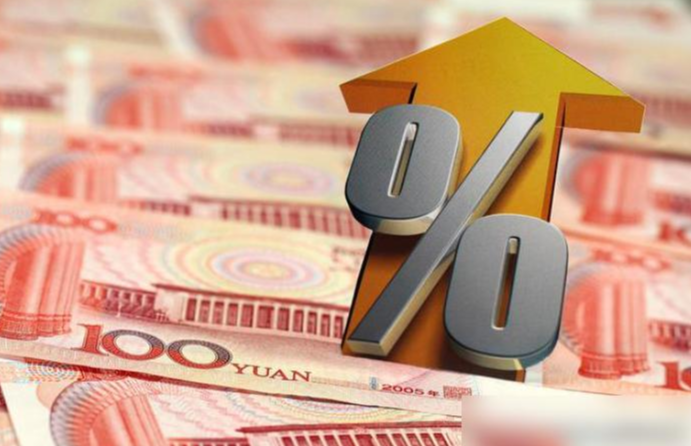In recent times, the fluctuations in the renminbi (RMB) exchange rate have incited discussions among economists, investors, and the general populace alikeWhen it comes to understanding how these changes impact daily life, one must dive deeper into the mechanics of currency valuation, global monetary policies, and their intricate connections to domestic economies.
The ascent of the U.Sdollar against other currencies, despite recent interest rate cuts by the Federal Reserve, has puzzled manyTypically, one would expect that reducing interest rates—the cost of borrowing money—would weaken a currency, making it less attractive to investorsYet, the U.Sdollar's performance tells a different story: it remains strong and resilient amidst these cuts.
To understand the current landscape, it's essential to reminisce back to a few years ago when the Federal Reserve was in a phase of increasing interest rates
The backdrop of that period was marked by economic recovery from the 2008 financial crisis, where rising rates were a signal of confidence in the economyFast forward to today, where the global economic environment remains uncertain; the Fed has pivoted to a more dovish stance, intentionally creating an atmosphere conducive to growth despite the high-interest rate environment of the past.
The paradox of a declining interest rate coupled with a rising dollar finds its roots in several underlying factorsFor instance, foreign capital often flows into the U.Sseeking security during times of economic volatilityInvestors perceive U.Sassets as a safe haven, which means they are willing to invest in dollars even when rates decreaseThis phenomenon reflects a broader investor sentiment concerned with stability over yield, thus preserving the dollar's strength.
Moreover, although the Federal Reserve may temporarily lower rates to stimulate the economy, there exists the potential for rates to be raised again as the economy bounces back
- Through Rate Cuts, Capital Flees: U.S. Stock Market Faces Volatility
- Silicon Valley Bank Collapse Sparks Financial Crisis Fears
- Nasdaq Hits 20,000: A New Benchmark?
- Polysilicon Futures Launch Upcoming
- U.S. Stock Futures Stabilize
This creates a scenario where investors feel logically secure investing in dollars since they anticipate potential growth from future interest hikesThus, even talk of rate cuts does little to diminish the dollar's standing.
As the RMB navigates these turbulent waters, it becomes a direct victim of the dollar's prowessIn examining the relationship between the RMB and USD, one can employ a simple formula: “Dollar Index * RMB Exchange Rate = Planned RMB Exchange Rate.” This illustrates that while the RMB can be expected to show fluctuations, a stable planned exchange rate underpins its potential erosion during periods of dollar strength.
The ramifications of these currency dynamics are not merely abstract financial conceptsThe impact of an appreciating or depreciating RMB extends into the daily lives of citizens, influencing everything from purchasing power abroad to the prices of imported goods
For instance, an appreciating RMB may entice citizens to shop overseas, where they can purchase goods at favorable pricesConversely, if the RMB depreciates, the same citizens may find foreign goods prohibitively expensive, limiting their consumption habits and planning for travel or overseas investments.
Equally important is the effect on Chinese exportersA stronger RMB means that goods priced in RMB are taller compared to when priced in dollarsConsequently, when the RMB rises, foreign buyers spend more to purchase the same Chinese products, which constricts profit margins for exportersIn contrast, a weakening RMB offers a competitive advantage, allowing exporters to maintain or boost profits as they sell goods cheaper overseas.
The economic interface between exchange rates and a nation’s foreign reserves forms another layer of understandingChina's foreign currency reserves, which approximate $3 trillion, heavily influence the strength of the RMB

They are not solely composed of dollar assets but also include a diversified basket of currencies such as the euro and yenThus, as the U.Sdollar fluctuates, it has knock-on effects on China's reserves and the overall economic health of the country.
In light of these complex interactions, one cannot overlook the strategic maneuvers that may unfold on the global stageThe U.Shas shown a tendency to leverage its currency power as a means of exerting influence not only within its borders but also globallyFor instance, any significant depreciation of the RMB may lead to increased exporting capabilities for China, contesting American economic interests.
Given the current global economic climate and intertwined financial systems, the exchange rate situation is indicative of broader geopolitical tensionsNations are closely monitoring each other's policies, especially as they relate to currency valuation
China's approach to currency management will undoubtedly have ramifications not just within its own economy, but also on international trading dynamics.
The allure of a stable dollar tempts investment, but it isn't without riskWhile the U.Smight seem to benefit from a robust dollar, it could paradoxically lead to strained relationships with trading partners, those who find it challenging to compete with an inflated dollar, thus leading to retaliatory measures or even trade wars.
The mounting tension between the U.Sand China in financial markets is symptomatic of an ongoing struggle not just over currency, but over influenceThe Reserve Currency of the World is a title that carries with it both power and responsibilityThe choices made by the U.SFederal Reserve and its effects on currency will resonate beyond its shores, influencing global economic stability.
While economists and policymakers are engrossed in determining the optimal path forward, local populations continue to feel the impacts of these grand narratives in tangible ways